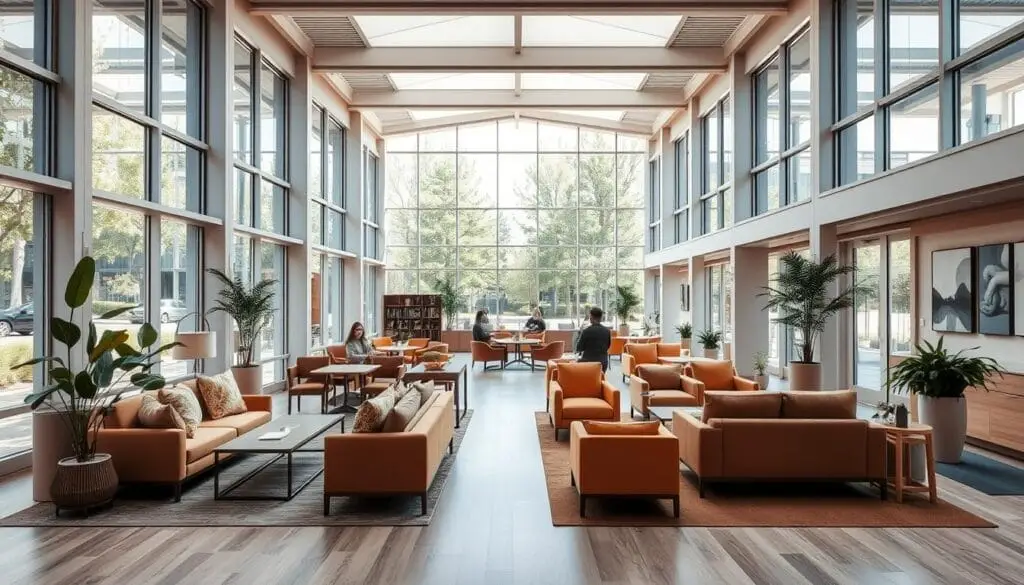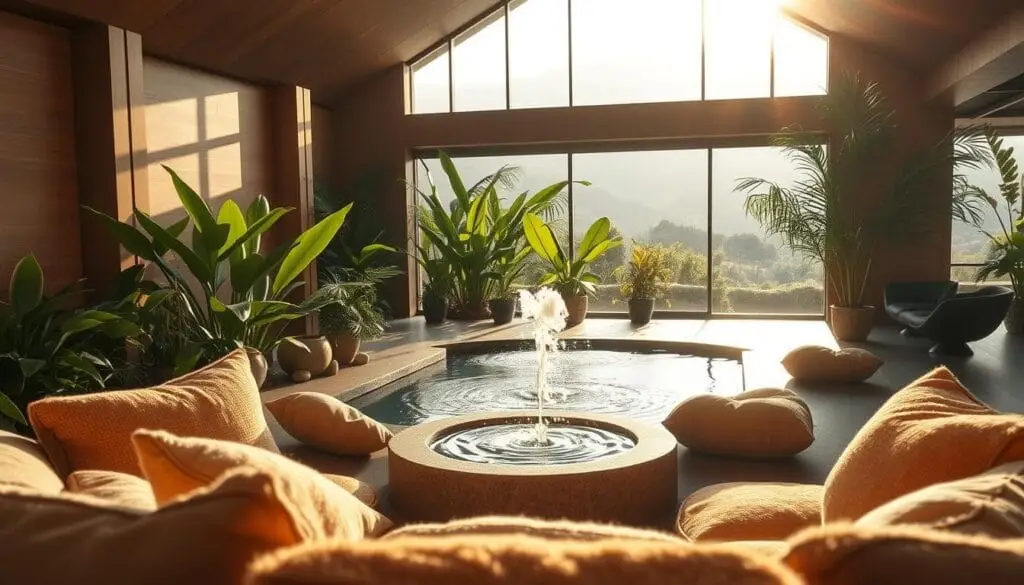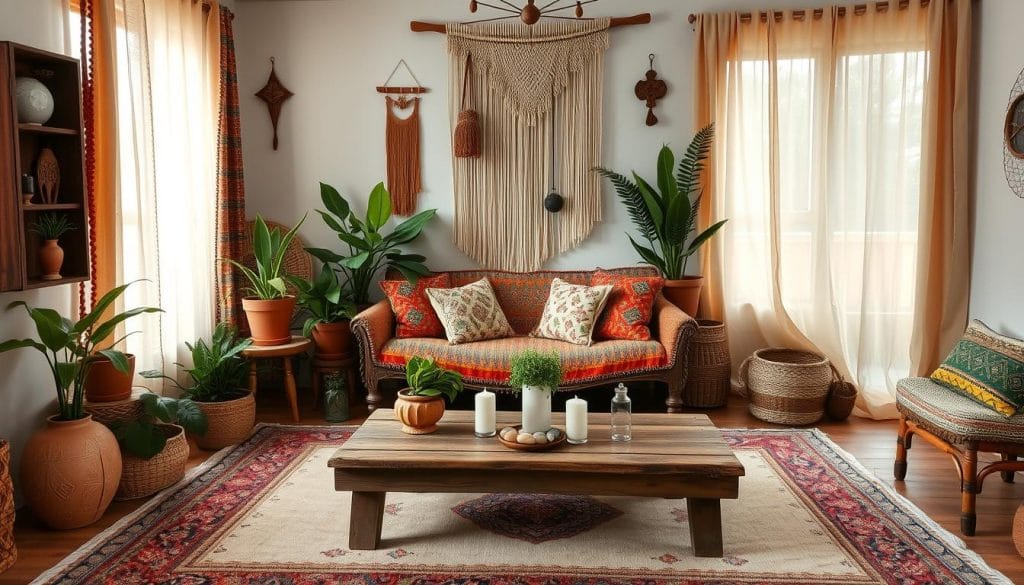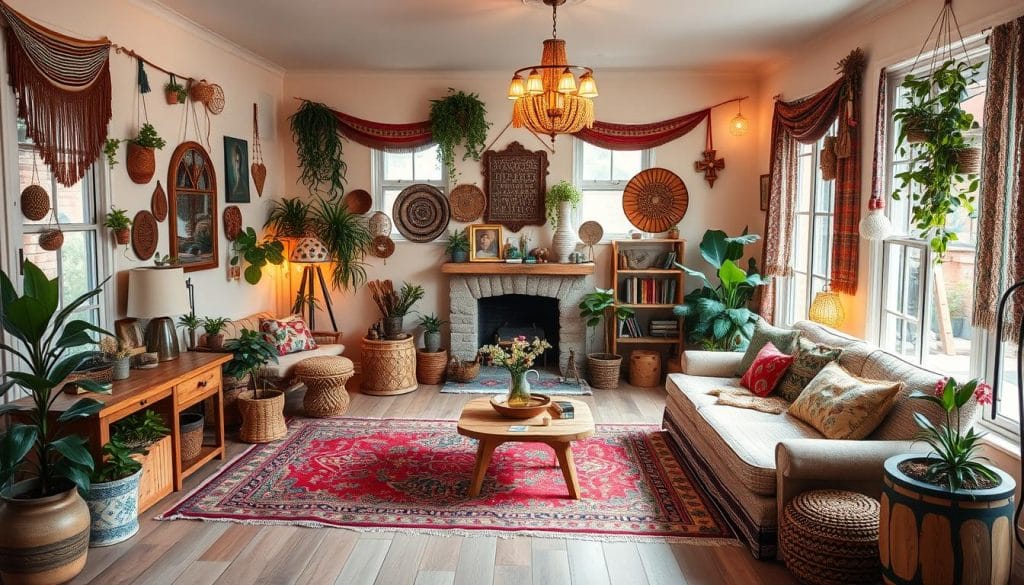Ever walk into a room and feel instantly at peace? Maybe the soft lighting hugged you, or a hint of lavender made you breathe deeper. That’s not luck—it’s the quiet power of thoughtful environments working their magic.
We’ve all had moments where a space just clicks. Your kitchen becomes a morning sanctuary with sunlight streaming through curtains. Your home office fuels creativity with textured rugs underfoot. These experiences aren’t accidents—they’re invitations to live better.
Today’s homes need to do more than look pretty. They should hum with life, comfort, and connection. Think about the last time you felt truly relaxed in your living room—chances are, multiple senses were engaged without you realizing it.
That’s where we come in. Our approach goes beyond aesthetics to craft areas that nurture and energize. Whether refreshing a bedroom or reimagining a workspace, you’ll learn how to layer elements that speak to sight, sound, touch, and beyond.
By the end of this guide, you’ll know how to turn any corner of your world into a multi-dimensional retreat. Let’s create places that don’t just house you—but celebrate every part of your daily journey.
Understanding Sensory Design in Modern Spaces
Ever notice how certain rooms seem to hum with life? It’s not just furniture placement—it’s intentional layering of experiences. This approach transforms ordinary areas into places that speak directly to your body and mind.
Beyond the Visual: A New Design Philosophy
Traditional methods prioritize looks first. But today’s creators ask: How does a couch’s texture feel? Does sunlight dance across walls at noon? Can a room’s scent boost your mood? We’re building spaces that answer these questions through layered details.
| Focus | Traditional Approach | Holistic Method |
|---|---|---|
| Primary Goal | Aesthetic appeal | Emotional resonance |
| Key Elements | Color schemes, layouts | Texture variety, soundscapes |
| Impact | Visual harmony | Full-body engagement |
From Ancient Wisdom to Modern Magic
Centuries ago, Persian gardens blended perfumed flowers with rustling water features for meditation. Today, coffee shops use muffled acoustics and warm lighting to ease your stress. Both eras prove great spaces connect us to our environment through feeling, not just seeing.
Imagine your living room. Soft fabrics underfoot, a playlist of forest birdsong, amber lighting that mimics sunset. Together, these details don’t just decorate—they nurture. That’s the power of thoughtful, multi-dimensional creation.
The Science Behind Sensory Design
Have you ever left a place feeling more drained than when you arrived? Our brains process 11 million bits of information every second—most through sight, sound, and touch. This biological reality shapes how we experience every space we enter, whether we realize it or not.
Research on Human Perception and Cognition
Neuroscientists discovered something revolutionary: our surroundings directly shape neural pathways. A 2022 UCLA study showed textured surfaces boost creativity by 34%, while soft lighting reduces stress hormones. That’s why we approach minimalist design principles with scientific rigor—every choice impacts how you feel.

Avoiding Sensory Overload for Optimal Experiences
Picture your favorite café. Now imagine blaring lights, screeching chairs, and competing music playlists. That chaos? It’s what happens when elements battle instead of collaborate. We’ve all felt that mental fog in poorly planned environments—it’s your brain hitting its processing limit.
Here’s the fix: balance. Pair smooth countertops with nubby rugs. Use warm lighting near plush seating. By focusing on how real people interact with spaces daily, we create intuitive layouts that feel effortless. After all, great design shouldn’t require instruction manuals—it should just work.
Sensory Design: Principles and Best Practices
Think about the last time a space made you exhale deeply. That’s the magic of intentional details working together—not just for looks, but for how people feel in their bones. Let’s unpack the essentials for crafting environments that welcome everyone.

Key Elements of Sensory-Friendly Environments
Great spaces balance stimulation and calm. Soft rugs muffle footsteps while smooth stone counters offer cool contrast. Natural light dances with adjustable lamps—layers that let users dial up or dial down their experience. These principles turn generic areas into personalized retreats.
We swear by materials that play nice together: linen curtains softening concrete walls, cork floors warming up stainless steel accents. It’s like composing a song where every instrument has its moment—no single element shouts over others.
Ensuring Inclusivity and Flexibility in Design
True comfort means designing for all nervous systems. One person’s cozy nook might overwhelm someone else. That’s why we build adaptability into every project—think rolling room dividers or peel-and-stick wall textures. As highlighted in this guide to core principles, flexibility isn’t an afterthought—it’s the foundation.
Swap out throw pillows for weighted blankets. Let sunlight stream in or filter through smart glass. When environments evolve with their users, they become living spaces that grow alongside the people who love them. Because the best designs don’t just accommodate differences—they celebrate them.
Practical Applications: Creating Sensory-Driven Spaces
What if your kitchen could calm you before your first sip of coffee? Or your backyard became a retreat that recharges your spirit? Let’s explore how real-world spaces are becoming multi-layered experiences—starting with where you live.

Residential Transformations with Immersive Details
Homeowners are turning bathrooms into zen zones with pebble-floor showers and cedar-scented diffusers. Bedrooms now feature “light recipes”—dimmable LEDs that mimic sunrise hues. These tweaks prove you don’t need grand architecture to craft meaningful places.
| Element | Traditional Approach | Immersive Upgrade |
|---|---|---|
| Flooring | Standard tiles | Heated river stones |
| Lighting | Overhead fixtures | Adjustable color temps |
| Acoustics | Basic insulation | Sound-absorbing panels |
Commercial and Urban Landscape Innovations
Cities are waking up to the power of thoughtful surroundings. The Alnarp Rehabilitation Garden’s winding paths let visitors touch aromatic herbs while hearing water features—a blueprint for public areas. One café chain reduced customer stress 40% by piping forest soundscapes into locations.
We’re seeing rooftop parks with wind chime forests and office lobbies using textured wall panels. As landscape architect Lila Torres notes: “Great public spaces don’t just look pretty—they make you feel connected to your community.”
Start small: add a corner with crunching gravel underfoot or hang bamboo wind catchers. Layer these details gradually—your space will evolve into a sanctuary that delights all who enter.
Integrating the Five Senses in Interior and Landscape Design
What does your morning routine feel like? Crisp cotton sheets against your skin, the earthy aroma of coffee brewing, sunlight filtering through linen curtains—these moments prove great spaces engage more than just your eyes. Let’s explore how to activate all five senses for truly immersive experiences.

Visual, Auditory, and Olfactory Cues in Design
We see with more than our eyes. Soft blues mimic calm lakes, while terracotta tones radiate warmth. Layer lighting—dimmable LEDs for adjustable moods, sheer curtains to diffuse harsh rays. Soundscapes matter too: wind chimes in gardens or curated playlists that match daily rhythms.
Ever walked into a room and instantly relaxed? That’s scent working its magic. Lavender in bedrooms, citrus in kitchens—aromas shape emotions before you even sit down. Pro tip: Use essential oil diffusers near entryways to set the tone.
Touch and Taste: Adding Depth to Sensory Experiences
Textures tell silent stories. Pair smooth marble counters with nubby wool rugs. Hang velvet drapes beside cool metal fixtures—your hands will thank you. For taste, think beyond edibles: mint plants by windowsills or fruit bowls as vibrant decor.
Remember: Great interiors don’t shout. They whisper invitations to linger. Start with one sense—maybe a rosemary-scented candle or a bamboo wind catcher—then build outward. Your space will become a living poem that delights every part of you.
Conclusion
Imagine stepping into a room that feels like a deep breath. Soft textures underfoot, sunlight dancing through sheer curtains, a hint of jasmine in the air—these details transform ordinary areas into sanctuaries. You don’t need grand gestures to make magic happen.
Start with what speaks to you. A plush chair by the window becomes a reading nook when paired with nature sounds. Fresh herbs on the kitchen counter add life and fragrance to morning routines. Small changes create ripple effects that uplift daily experiences.
In our screen-filled world, physical environments play a crucial role in grounding us. Layered lighting or living walls purify air while adding vitality. These thoughtful elements help people reconnect with the present moment—one deep breath at a time.
Your home holds endless potential to nurture and inspire. Whether adding woven baskets for texture or tuning acoustics with rugs, every choice shapes how spaces feel. We’ve seen firsthand how atmospheric tweaks boost well-being—like that friend who always makes you feel heard.
Now’s your moment to craft corners that celebrate life’s simple joys. Share your creations with us @HomeHaven—we’re cheering you on as you build environments that don’t just look good, but truly feel like home. 🌿✨



